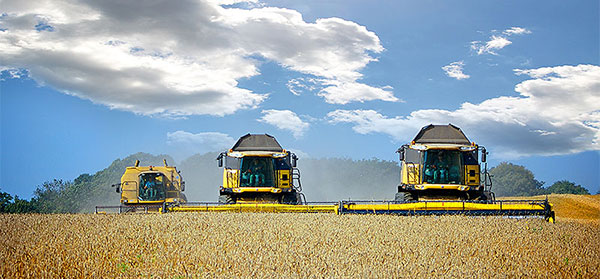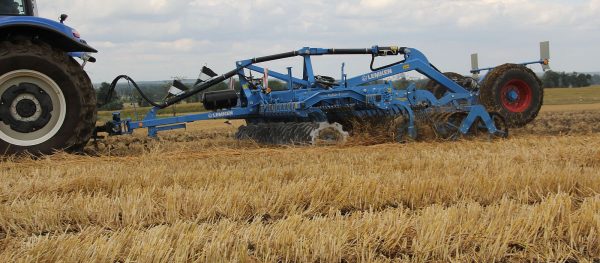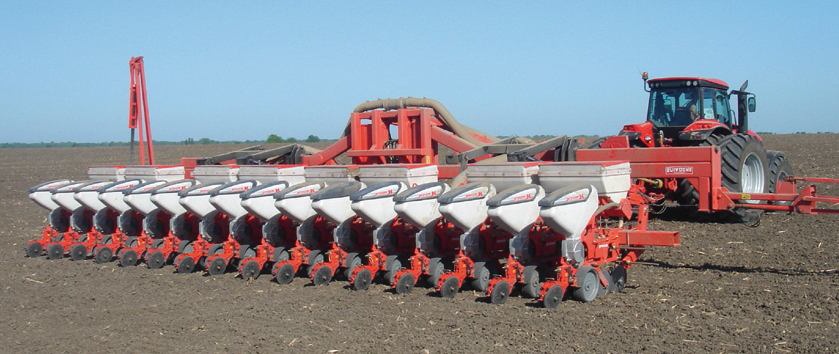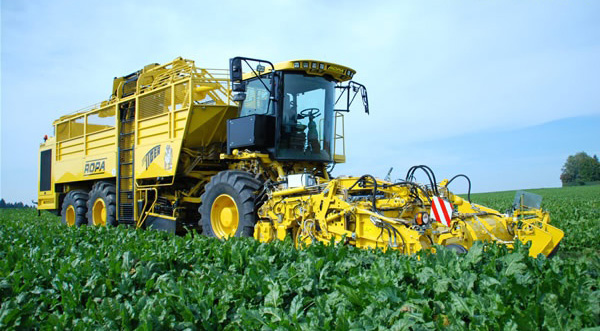Cultivation of sugar beet
Selecting soil for the cultivation of sugar beet
Optimal: medium and well-cultivated sod, sod-carbonate and sod-podzolic loamy or sandy soil, underlain at a depth of 0.5 m moraine loam. The soil should have a high water-holding capacity and be well aerated.
Requirements to agrochemical composition soil: pH – 5,8-6,5, humus content – not less than 1.8%, available phosphorus and potassium exchange – at least 150 mg / kg soil, boron, – less than 0,7 mg / kg soil.


The predecessors for beets in rotation
Best predecessors: winter cereals, are good – spring cereals, legumes.
Invalid predecessors, corn, flax, rape, perennial legumes and grasses. It is impossible to cultivate sugar beet after cereal crops when applying herbicides chlorsulfuron, metsulfuron; during the spring application of herbicide Gusar; after legumes – Pivot, 10% emulsifiable concentrates and its analogs (5 years), Pulsar, BP. Return to the former sugar beet field, not earlier than 3 years.
Soil treatment under the beets consists of autumn (basic) and spring (preplant).
The main tillage can be of two types: traditional and soil protection.
Traditional technology includes: Shallow plowing (8-10 cm) and carrying moldboard plowing to a depth of 30-35 cm. Stubble cultivation should be conducted no later than 3-5 days after harvesting. Can be processed by polypore type: 1-2 cultivation.
Ploughing should be done after making reversible plows phosphorus and potassium fertilizers. The optimal duration of carrying – the month of September. Align fields (open furrows and back grooves) must be carried out in the autumn.
Spring plowing under sugar beet is not allowed.
Soil-protective technology provides subsurface loosening the soil to a depth of 30-40 cm, leaving a mulch on the surface of the field. This treatment is recommended for soils prone to wind and water erosion.
The main tillage can be of two types: traditional and soil protection.
Traditional technology includes: Shallow plowing (8-10 cm) and carrying moldboard plowing to a depth of 30-35 cm. Stubble cultivation should be conducted no later than 3-5 days after harvesting. Can be processed by polypore type: 1-2 cultivation.
Ploughing should be done after making reversible plows phosphorus and potassium fertilizers. The optimal duration of carrying – the month of September. Align fields (open furrows and back grooves) must be carried out in the autumn.
Spring plowing under sugar beet is not allowed.
Soil-protective technology provides subsurface loosening the soil to a depth of 30-40 cm, leaving a mulch on the surface of the field. This treatment is recommended for soils prone to wind and water erosion.

Spring soil moisture treatment involves the closure during physical ripening of the soil. The working depth – 4 cm. Spring treatment is to ensure the creation of a loose lumpy structure with the content in a loose layer of lumps up to 10 mm at least 85% saltwater – no more than 20 mm, the soil density – 1.0-1.3 g / cm3. Available in size lump of more than 30 mm is not allowed.
Seedbed preparation should be carried out to a depth of 2-4 cm. Do not use soil-cultivating units with active working bodies (rotary harrows, cultivators).
Planting beets
For sowing use only sugar-coated seeds fractions of 3,75-4,75 mm. In the composition of the pellet to be included disinfectants insecticidal and fungicidal activity. Fungicides based on: thiram (arasan, etc.) – 4 g / p.e, diniconazole M (Sumi-8) – 0.04 g / p.e, hymexazol (Tachigaren) – 4.2 g / p.e.; Insecticides: Gaucho, the COP (and its analogues) – 90 g / p.e, Magna Force – 0,075 l / p.e, Montour Forte – 0,1 l / p.e, Poncho Beta 0,075-0,150 l /p.e.
For sowing use only sugar-coated seeds fractions of 3,75-4,75 mm. In the composition of the pellet to be included disinfectants insecticidal and fungicidal activity. Fungicides based on: thiram (arasan, etc.) – 4 g / p.e, diniconazole M (Sumi-8) – 0.04 g / p.e, hymexazol (Tachigaren) – 4.2 g / p.e.; Insecticides: Gaucho, the COP (and its analogues) – 90 g / p.e, Magna Force – 0,075 l / p.e, Montour Forte – 0,1 l / p.e, Poncho Beta 0,075-0,150 l /p.e.
The optimum planting time – at soil temperatures 5-6 C at a depth of 5cm. Gap between planting and seedbed is unacceptable. Land seeded in optimal deadlines. Seeding rate – 1.2-1.3 units of crop per hectare, depending on soil and climatic conditions.
Seeding depth: on sandy, loam soils of 30-35 mm; on mid argillaceous – 25-30 mm; on heavy soils, high humidity – 20-25 mm; to a predetermined depth with the deviation ± 10 mm must be patched at least 95% of the seeds.

Sowing sugar beet carried out by mechanical or pneumatic precision seed drills. The width of the main row spacing – 45 cm, butt – no more than 50 cm. Operating speed – not more than 5 km/h. For the convenience of work on care of crops beet is recommended to use the tramlines.

Beet harvesting
The most optimal terms of sugar beet, harvesting period is from September 15 to November 15. Harvesting of root crops should be completed before the onset of a stable temperature below 5°C, and the freezing of the soil.
The most optimal terms of sugar beet, harvesting period is from September 15 to November 15. Harvesting of root crops should be completed before the onset of a stable temperature below 5°C, and the freezing of the soil.
Possible earlier harvest start date calendar of sugar beet – from September 1 (in years with extreme weather conditions, or the expectation of the number of raw materials in excess of the regulatory) according to the schedule agreed with the processing plants. Harvesting in the early stages should start in areas with higher productivity, with the sugar content in the roots of not less than 14%.
Preparing the field for harvesting: clean roots from the headland; the field is divided into paddocks with the number of rows in each multiple of six. Necessary adjustments combine the transition to a new site and (or) cleaning of the new hybrid.
Machine system for complex mechanical harvesting of root crops include self-propelled beet harvesters such as SF-10 firms “FRANZ KLEINE”, “HOLMER” (Germany), “EURO Tiger” V8h (ROPA), and others.
For loading of root crops from time when thread-turners transhipment cleaning process uses a loader RL 200 SF MAUS (FRANZ KLEINE), EURO MAUS (ROPA), and others.
For loading of root crops from time when thread-turners transhipment cleaning process uses a loader RL 200 SF MAUS (FRANZ KLEINE), EURO MAUS (ROPA), and others.
At the same topic see also:
